Canelé, Chocolatine, and Wine, Wine, Wine!
Bordeaux is the centerpiece of one of the most famous wine regions in the world. From here you can explore nearby châteaus or simply relax in one of the many restaurants and cafes that feature dozens and dozens of local bottles. And Bordeaux boasts a great food scene as well. So many dishes are designed with the perfect wine pairing in mind.
A Short History
The earliest settlements are from 20,000 years ago when cave dwellers (Neanderthals) lived in the area near present-day Bordeaux. Celts arrived in the 4th century B.C. and they were conquered by Rome in the 1st century B.C. During Roman rule, vineyards were planted in the 1st century A.D.
As Rome wobbled, Bordeaux was sacked by the Vandals, the Goths, and the Franks who wound up ruling the region.
In 1152, Bordeaux came under English rule when Duchess Eleanor married Henri, heir to the British throne. This merger created a huge demand for French wine in England and Bordeaux boomed as an exporter of local bottles.
Battles raged for the next three centuries between France and England as to who should control the Aquitaine region (including Bordeaux). Ultimately, France prevailed and Bordeaux permanently became a part of France in 1453.
Bordeaux’s position on the Atlantic coast made it a powerful port city in the 18th century when trade between France and the New World made Bordeaux rich. This trade also shamefully included Africans in bondage headed for brutal lives as slaves in the colonies.
This prosperity put the city on track for a building boom. Over 5,000 building built during this time still stand in Bordeaux.
Bordeaux briefly became the capital of France during the Prussian War and WWI. During WWII, Aristides de Sousa Mendes do Amaral e Abranches, the Portuguese consul-general in Bordeaux illegally issued visas to countless people, including Jews, fleeing the Nazis.
Foodie Bordeaux
Bordeaux has become a foodie capital of France. While the city’s gastronomic charms are not as well known to outsiders as Paris or Lyon, Bordeaux has a rich food culture; some say the best in all of France.
Canelé
The Canelé is a specialty of bakeries in Bordeaux. These little cakes are said to resemble a stout Doric-style column, but I prefer to think that they look like the mountain from Close Encounters of the Third Kind. Either way, the delicious little cakes are made with just a few ingredients: egg yolks, milk, flour, butter, sugar, salt, rum, and vanilla.
Legend has it that the nuns in the Annonciades Convent made little cakes using egg yolks donated by local winemakers (traditional winemaking used egg whites for clarifying the wine, the yolks had no use in the process). Those egg yolks help give the cake its custardy interior. No one is sure when the first Canelé was made, but the recipe is likely at least 300 years old and perhaps much older than that.
What makes the Canelé so unique is the high sugar content and baking time of the pasty. Granular sugar is in the recipe, but the sugar from the rum ups the sugar content and the long baking time means that the outside of each Canelé is crispy with burnt sugar. The rum makes the inside of the Canelé like a boozy custard. Delightful and small, you end up downing several before you realize what has happened.
Today, many bakers use silicone baking pans for their cakes, but in Bordeaux, the only real way to make Canelé is in a metal mold, preferably copper. This allows the Canelé to reach the correct state of crispiness.
Every bakery in Bordeaux has Canelé for sale. The best spot might be La Touque Cuivree where they sell the crunchy, boozy, custardy treats by the hundred. Canelés Baillardran also makes a terrific Canelé and they are easy to find because they have lots of locations throughout the city.
For a wine pairing, a white Bordeaux or a sparkling wine from Les Cordeliers would be perfection.
Chocolatine
What do you call a sandwich served on a long skinny bun? If you’re like most people in the United States, you call it a Sub or Submarine Sandwich. But, in New England they’re called Grinders, while in New York City they’re called a Hero and in Philly they’re Hoagies. In Louisiana, ask for a Po’Boy. There’s more than a dozen regional terms for this sandwich. Even little Peoria, Illinois has it’s own name for it; the Gondola.
If you’ve ever been to France, you’ve probably had something called Pain au Chocolat. It’s a puff pastry or croissant with some dark chocolate on the inside. French people love this treat for breakfast. But, just like the Submarine sandwich, its name varies by region in France.
Throughout most of the country, including Paris, Pain au Chocolate is the name given this famous pastry. But in parts of far northern and far eastern France, Petit Pain au Chocolat is the correct term. There’s also a part of eastern France that calls the pastry Croissant au Chocolat and a tiny sliver of the country refers to it as Couque au Chocolat. But, in southwest France, where Bordeaux is located, people call this treat Chocolatine.
None of the methods of making Pain au Chocolate/Petit Pain au Chocolat/Croissant au Chocolat/Couque au Chocolat/Chocolatine is different, just the naming convention. But, if you want one with your morning coffee, be sure to refer to it by the proper name.
La Boulangerie Saint Michel is a great bakery that has mighty fine Chocolatine as well as other treats, including the famous Bordeaux cake Canelé.
Lamproie à la bordelaise
Lamproie à la bordelaise is a traditional dish dating back to the Middle Ages in Bordeaux. From winter to early spring Lamprey, a fish that resembles an eel, migrate from the sea up the river. Here, they are caught and used as the main ingredient in the famous Lamproie à la bordelaise.
Preparation of the dish is rather ghastly as the live creature is sliced open and bled to death in a bowl. The carcass is boiled and Bordeaux wine is added to the blood to prevent it from coagulating. After the head, tail, spine, and skin of the fish are removed it is chopped and added to the blood/wine mixture which is simmered with onions, herbs, shallots, and leeks.
Since this dish features red wine as the sauce, you’ll want a bold Bordeaux to drink with it. Perhaps something from the Left Bank with Cab-Sauv intensity.
Le Noailles is the best place to go in Bordeaux for traditional Lamproie à la bordelaise. If the idea of blood stew doesn’t appeal to you, Le Noailles has a wild mushroom omelette.
Salade Landaise
Just south of the Bordeaux is the Landes region of France which is where Salade Landaise originates. Landes is famous for duck, so duck meat and gizzards are both prominent in this dish. Salade Landaise also features mushrooms, a sherry vinaigrette dressing, and is often topped with foie gras. The nice thing about a Salade Landaise is it is one of the few salads that can stand up to a bold red Bordeaux because of the duck fat.
Drinking in Bordeaux
Wine
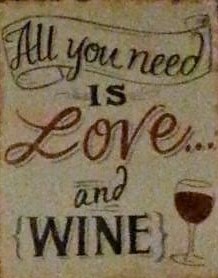
Bordeaux is one of the most famous wine regions in the world. Even so, people are still unfamiliar with the grape varietals grown there. That’s because French wine, unlike most wine from the U.S., is not labeled by grape, but by the region. So, you need to know a little bit more before you plunk down dollars for a bottle.
Most wines in Bordeaux are blends of grape varietals with the Left Bank (Médoc and Graves region) featuring Cabernet Sauvignon, while the Right Bank (Libournais, Bourg, and Blaye) features Merlot. The Graves region also grows some white grapes like Sauvignon Blanc.
Further, each region has several sub-regions and each sub-region has its own famous chateaus. But, if you don’t want to memorize the characteristics of each sub-region, it’s safe to think that Left Bank (Cab-Sauv) wines are generally more tannic (some say spicy) and go with bolder dishes while Right Bank (Merlot) wines are generally lighter.
There are lots of ways to learn about and enjoy the wines of Bordeaux. One fun thing to do is to take a wine tour and visit a few vineyards yourself. This can be an enjoyable way to get out of the city for a few hours and taste some wine (I’ve listed several options below in the Things To Do section).
Also, several chateaus offer guided tours and wine tastings. One of the most famous producers is Château Mouton Rothschild. They offer tours, but like most wineries in the Bordeaux region, require you to book an appointment in advance, so be sure to plan ahead. And remember, if you’re driving yourself; don’t drink and drive. DUI laws in France are very strict.
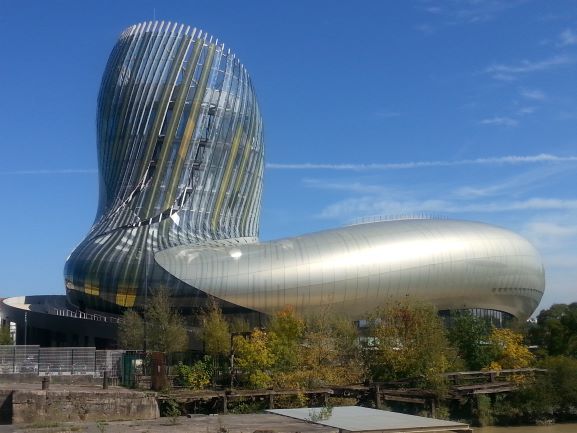
If your time in Bordeaux is limited, or you don’t want to burn a whole day shuttling from one winery to another, there are lots of ways to enjoy the grape in the city.
The magnificent La Cite du Vin is a state of the art wine museum and education center with a huge tasting room on the top floor. Some residents have derided the modern building which is supposed to resemble wine swirling in a glass as looking like excrement. I disagree, I think the design is fantastic.
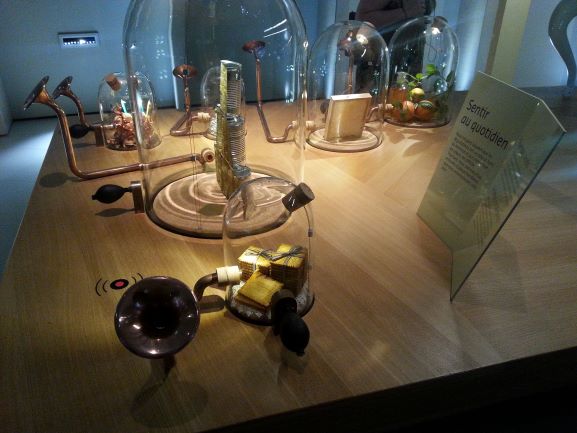
Inside there are interactive screens with information about wine regions all over the world, fragrance stations to compare the different olfactory notes of wine, and rotating exhibits. When we were there we saw a display about Georgian wine (the country, not the state), complete with film from 100 years ago showing the traditional underground fermentation method. Now, I desperately want to go to Georgia; add it to the list.
Bordeaux understandably has an incredible array of winebars to choose from. Le Bar á Vin has a huge wine selection with some glasses for as little as 2€! The atmosphere is pretty great as well. Vins Urbains is a narrow little place with a nice bar up front or some quiet tables in back. Nice selection and good food, too. I was delighted to have some crostini with truffle puree at Vins Urbains when we arrived in Bordeaux after a long flight.

The courtyard is a quaint getaway at Le Boutique Hotel Wine Bar. They’ve got a nice wine list as well. Cafe Brun‘s quirky interior will delight you. Along with plenty of wines to choose from, they’ve got good cocktails and beers.
The Bordeaux Tourism and Convention Bureau has done a great job of promoting the wine industry in Bordeaux. They have even made a downloadable map of many of the best winebars in the city. Indispensable.
A quick note: because of the way alcohol is regulated in France, you may be expected (required) to order food with your wine.
Lillet
Wine isn’t your only choice when in Bordeaux. Lillet, an apertiv invented in nearby Podensac. You might recognize the name from the Lillet martini, invented by the James Bond character in Casino Royale.
Lillet is made from Bordeaux wine and aged with citrus liqueurs and Quinquina. Quinquina is made from quinine which was used as a treatment for malaria. Lillet and other drinks with quinine were very popular years ago as so-called “healthy drinks” consumed to treat malaria.
Lillet was originally made using white wine, but now there are red and rose versions available as well. While Lillet is used to make cocktails in the U.S., in Bordeaux it is most often consumed as an apertiv.
Things to do in Bordeaux

It wasn’t that long ago that the city of Bordeaux was run-down and rather grimy. But, in the last few years, the city has been on a beautification mission and it is now quite striking, although there is still work left to be done.
I always advocate walking tours to get to know a city and Bordeaux has a decent one offered through the Tourism Center. But, there is another tour that offers insight into an unknown aspect of the city’s history.
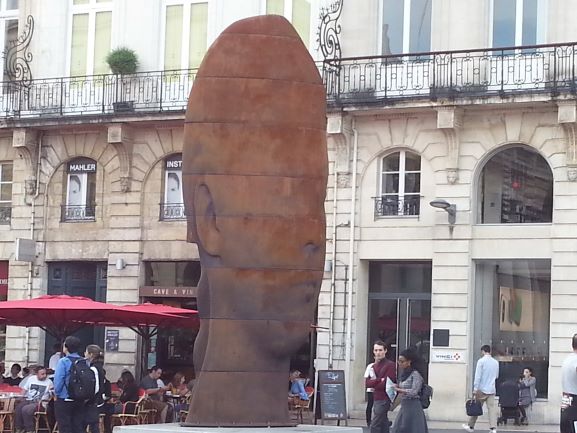
Bordeaux nègre is a guided tour that covers Bordeaux’s extensive involvement in the slave trade. Karfa Diallo, a local writer, designed the tour to give visitors a look into this ugly part of Bordeaux’s past that many would like to forget.
There’s also a fine foodie tour, MIAM Bordeaux, which at €39 is a bargain.
If you’re going to be visiting museums, the Bordeaux City Pass can be a worthwhile investment. It gives you free admission to several museums, reduced rates on many tours, and free access to public transportation including the tram and ferry. Bordeaux is a big city and we found ourselves using public transportation quite often. The City Pass definitely pays for itself several times over if you use it wisely.
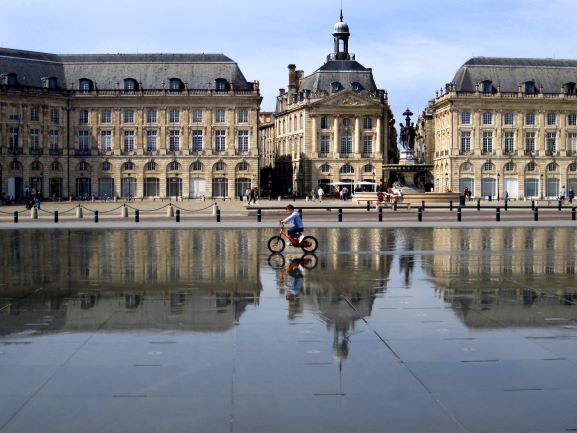
Day Trips
This is France and so there are lots of charming little villages for you to visit. And since this is also Bordeaux, wine if often the focal point of these villages.
St. Emilion
St. Emilion is named after an 8th century monk who lived in a cave and supposedly performed miracles. The village is small but usually crowded with tourists wanting to experience the medieval architecture. Be prepared to walk some hills, St. Emilion isn’t flat like Bordeaux.
Wine is a big draw in St. Emilion and, being on the Right Bank, they produce some fine Merlot. As is true all over Bordeaux, most wines produced in St. Emilion are blends. In this case, Merlot is the dominant grape with Cabernet Frac and, rarely, Cab-Sauv adb8n542915886790.
It’s easy to visit St. Emilion and experience its wine culture. Tour buses depart Bordeaux daily for the easy drive, or take the public bus and navigate your own tour.
Many chateaus in the region have restaurants and bars in town, making the wines of St. Emilion very accessible. The most interesting place might be the Cloître des Cordeliers. This 14th century monastery was closed down during the French Revolution and left abandoned for 100 years.
Underneath the cloister, 2 miles of tunnels hold the famous Les Cordeliers sparkling white and rose wine. Guided tours of the tunnels and winery take about 90 minutes and afterwards you get a tasting. Admission to the ruins of the monastery and gardens, apart from the wine cellars, is free.
But, St. Emilion also has another reason to visit; the famous St. Emilion macaron. These macarons are not like the pastel-colored ones you might be familiar with. St. Emilion macarons are larger and have a more intense flavor.
Véritables Macarons de Saint Emilion aka Les Macarons de Nadia Fermigier is the best place to get St. Emilion macarons. Their name translates to Authentic Macarons of St. Emillion. And, just in case you doubt their cred, they use a macaron recipe from the 17th century.
Left Bank
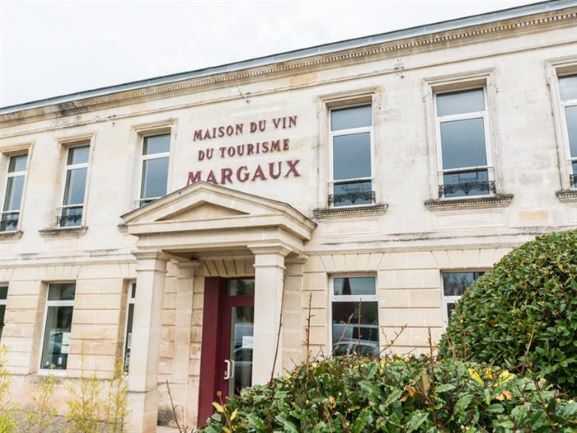
A visit to the Left Bank is like a pilgrimage for oenophiles. The peninsula is dotted with high end châteaus including several legendary names. Many wineries offer tastings, but they are usually only by appointment. Book a tour or make your reservations ahead of time to be sure to see your favorites.
Margaux is part of the Left Bank of the Bordeaux wine growing region which includes such famous appellations as Paullac and Saint-Julien. The village itself doesn’t have much to recommend it other than the essential Maison du Vin which has excellent information about the wineries along the peninsula.
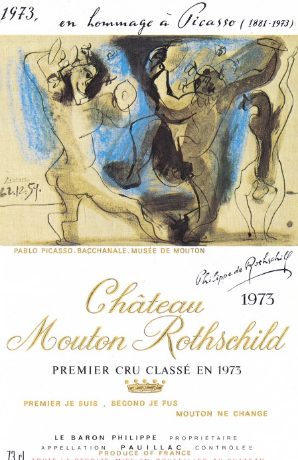
Château Mouton Rothschild is one of the most famous names in the wine world. And yes, you can visit if you make an appointment, which is a good deal because bottles of Rothschild start at about $500 a bottle and can go into the many thousands.
One of the highest rated vintages is 1945, which is also the year WWII enb8n542915886790. I first encountered the theory of excellent wine vintages coming in the year of war ending (and poor vintages in the year of war beginning) in the brilliant book Wine and War. I was so fascinated by this concept that I incorporated it into my my novel Truffle Hunt. In it, the Mattioli family drink 1945 wine every Christmas and also enjoy 1992 wine from the year of Croatian independence.
D’Aggasac and Château Lanessan are two other wineries on the Left Bank tastings by appointment. Château Lanessan, with its English gardens, is especially nice.
Arcachon
If you want a break from the grape, Arcachon, south of Bordeaux, is a great escape. Wandering around town, you can’t help but notice the charming Arcachonnaise, or Arcachon Villas, a kind of Victorian house. A few have been converted into boutique hotels while some others are vacation rentals.
Arcachon is beach resort town and is famous for its massive sand dune, the Dune du Pilat. Paragliders often take off from the top of the dune, so this is a great spot for a picnic and watching the thrill seekers fly away.
The beaches around Arcachon can get crowded, especially in the summer. But head south a couple kilometers and the golden sand is much less busy.
Backing up to the town of Arcachon is the massive Landes Forest. Once a giant swamp, the land was reclaimed and planted with pine trees a hundred years ago.
Today, there are dozens of bike paths through the forest and along the coastline. The tourism office in Arcachon can set you up with a map of the local bike paths, both short and long. Velos d’Albret offers bike rentals.
Transportation
Bordeaux-Mérignac Airport (BOD)
Airport with flights to Europe and North Africa. The only non-stop service to North America is seasonal flights to Montreal.
High Speed Train
The TGV, or high speed train, has now connected Bordeaux with Paris. You can get from the City of Lights to Bordeaux in a little over two hours. Book ahead for cheapest rates.
Rue Charles Domercq, 33800 Bordeaux, France
Local Transportation
Public transportation connects almost every corner of Bordeaux. TBM runs the tram, bus, ferry, and bike system in Bordeaux.
Uber is widely available as are taxis.
Tram
Three tram lines cover much of the city. Very convenient and cheap.
Bus
City buses cover all areas of the city.
Ferry
TBM (the public transportation company) also operates a river ferry. Very cheap though boats are not as frequent as buses or trams.
Bikes
TBM also offers a bike service. Over 100 docking stations located throughout the city.
Index of Things to Do in Bordeaux
MIAM Bordeaux
Excellent and affordable food tour of Bordeaux.
Half Day Wine Tour
The least expensive option (bus coach with 50 other people) covers different wine regions in a half day. Book at the tourism office.
Ophorus
Smaller scale wine tours of Bordeaux.
Bordeaux Wine Trails
Wine tours of Bordeaux with a maximum of eight people.
Bordeaux City Pass
Includes admission to many site including Cite du Vin and unlimited access to the tramway.
Bordeaux nÈgre
Educational tour about Bordeaux’s extensive role in the African slave trade.
La Cite du Vin

Wine museum and education center.
134 quai de Bacalan, Esplanade de Pontac, 33300, Bordeaux, France
Urban Wine Trail
Downloadable map of some of the best wine bars in Bordeaux.
Musée des Beaux-Arts
Art museum with a collection of 17th & 18th century French paintings.
20 cours D Albret, Jardin de la Mairie, 33000, Bordeaux, France
Basilique Saint Michel
Gothic church with a tall spire offering some of the best views of the city.
Place Meynard, 33800, Bordeaux, France
Cathédrale St-André
Medieval cathedral with an incredible facade.
Place Pey Berland, 33000, Bordeaux, France
Utopia
Church turned art-movie house. Cafe attached.
5 Place Camille Jullian, Bordeaux, France
Esplanade des Quinconces
Huge, empty square featuring the magnificent Monument aux Girondins.
2792 Place des Quinconces, 33000 Bordeaux, France
Miroir d’eau
World’s largest reflecting pool is only an inch deep.
2 Place de la Bourse, 33000 Bordeaux, France
Falling Car
Oddball public art exhibit has a Jaguar seemingly falling out of the parking garage.
117 Cours Victor Hugo, 33000 Bordeaux, France
Maison du Vin
Excellent resource for châteaus on the left bank.
7 Place de la Tremoille, 33460 Margaux, France
Château de Sales
Beautiful Pomerol winery offers tours by appointment.
11 Chemin de Sales, 33500 Libourne, France
Château Mouton Rothschild
The legendary winery offers visits by appointment.
Château Mouton Rothschild, 33250 Pauillac, France
Chateau La Dominique
Iconic St. Emilion winery. Book ahead for tastings and tours.
1 Lieu Dit la Dominique, 33330 Saint-Emilion, France
Château Soutard
St. Emilion winery offers several tours.
Soutard, 33330 Saint-Á‰milion, France
Château Canon
One of the best wineries in St. Emillion offers free wine tours with a tasting (book in advance).
Lieu Dit Saint Martin, Route du Milieu, 33330 Saint-Emilion, France
Cloitre des Cordeliers
Site of an abandoned Franciscan monastery is now a winery.
2 bis Rue de la Porte-Brunet, 33330 Saint-Emilion, France
Château Lanessan
Beautiful English gardens. Tastings by appointment.
33460 Cussac-Fort-Médoc, France
Château Guiraud
No advance booking required for tastings.
1 Château Guiraud, 33210 Sauternes, France
D’Aggasac
Winery in Médoc offers tours and tastings by appointment.
15 rue du Chateau D Agassac, 33290 Ludon-Medoc, France
Tourism office of Arcachon
Pick up your map of bike paths here.
au MA.AT Esplanade Pompidou, 22 Bd du Général Leclerc, 33120 Arcachon, France
Velos d’Albret
Bikes, electric bikes, and scooter rentals in Arcachon.
326 Boulevard de la Plage, 33120 Arcachon, France
Index of Food & Drink in Bordeaux
Vins Urbains
Lovely little winebar and restaurant.
27 rue des Bahutiers, 33000, Bordeaux, France
Bar a Vins
Incredible selection of Bordeaux wines. Food, too.
3 cours du 30 Juillet, 33000, Bordeaux, France
La Boulangerie Saint Michel
Great place to get chocolatine.
51 rue des Faures, 33000, Bordeaux, France
Cafe Brun
Quirky decor. Nice spot for a drink.
45 Rue Saint, 33000, Bordeaux, France
Au Bistrot Bordeaux Capucins
Excellent food, reasonably priced.
61 Place des Capucins, 33800, Bordeaux, France
Le Cafe Populaire
Loud and busy cafe. Not a quiet French bistro, but tapas and drinks at the bar is fun.
1 rue Kleber, 33800, Bordeaux, France
Mets Mots
Lovely little restaurant with an open kitchen.
98 rue Fondaudege, 33000, Bordeaux, France
La Toque Cuivree
Great spot to get a Canelé.
41 Place Gambetta, 33000, Bordeaux, France
Canelés Baillardran
Bakery with lots of locations in Bordeaux offering Canelé.
Chez Dupont
Bistro frequented by locals.
45 rue Notre Dame, 33000, Bordeaux, France
La Tupina
High end restaurant is a Bordeaux institution.
6 rue de la Porte de la Monnaie, 33800, Bordeaux, France
Le Pressoir D’Argent
One of the top restaurants in Bordeaux. Inside the Intercontinental.
The Grand Hotel, Place De La Comedie, Bordeaux, France
Night Beach
Rooftop bar/restaurant on the Intercontinental Grand Hotel.
The Grand Hotel, Place De La Comedie, Bordeaux, France
The Frog and Rosbif
Brewery on the site of a former women’s prison. Watch the game here.
23 rue Ausone, 33000, Bordeaux, France
Peppone
Best Italian restaurant in the city. They don’t take reservations, so get there early.
Cours Georges Clemenceau, 33000, Bordeaux, France
Le Bouchon Bordelais
Creative bistro featuring local produce.
2 rue Courbin, 33000, Bordeaux, France
Horace
Unassuming cafe with excellent food at reasonable prices.
40 rue Poquelin Moliere, 33000, Bordeaux, France
Le Noailles
The place to get lamprey à la bordelaise.
12 Allees de Tourny, 33000, Bordeaux, France
Brasserie du Sud Ouest
Salade Landaise on the menu
275 cours de la Somme, 33800, Bordeaux, France
EatWith
Instead of eating at a restaurant, how about eating with a local at their home?
Véritables Macarons de Saint Emilion aka Les Macarons de Nadia Fermigier
Authentic St. Emilion macarons.
9 rue Guadet, 33330 Saint-Emilion, France
Index of Shopping in Bordeaux
Farmers Market
Busy market every Saturday outside Basilique Saint Michel.
Place Meynard, 33800, Bordeaux, France
Marché des Capucins
Huge indoor food market.
Place des Capucins, 33000, Bordeaux, France
Marche Chartrons
Sunday morning farmers market on the riverfront.
Quai des Chartrons, 33000, Bordeaux, France
Fromagerie Deruelle
Top-notch cheese shop.
66 rue du Pas Saint Georges, 33000, Bordeaux, France
L’Intendant
Fine wines with prices ranging from a fast food meal to a small car.
2 Allées de Tourny, 33000 Bordeaux, France
Cave Art & Vins
Wine, whiskey, and fine foods.
2 Place du Palais, 33000 Bordeaux, France
Chocolaterie Saunion
Best chocolate shop in the city.
56 Cours Clemenceau, 33000 Bordeaux, France
Popins
Umbrellas for your bike. Ingenious.
55 Rue Saint-James, 33000 Bordeaux, France
Index of Places to Stay in Bordeaux
Hotel Notre Dame
Good no-frills budget option.
36 rue Notre Dame, 33000, Bordeaux, France
L’hôtel Particulier
Beautiful 19th century boutique hotel.
44 Rue Vital Carles, 33000 Bordeaux, France
Intercontinental Grand Hotel
The best of the best. Deep pockets required.
2-5 Place de la Comédie, 33000 Bordeaux, France
La Maison Cachée
Lovely B&B with a shaded garden.
20 Avenue Jeanne d’Arc, 33000 Bordeaux, France
About the Author

Brent Petersen is the Editor-in-Chief of Destination Eat Drink. He currently resides in Setubal, Portugal. Brent has written the novel “Truffle Hunt” (Eckhartz Press) and the short story collection “That Bird.” He’s also written several Foodie Travel Guides to cities in France including Lyon and Châteauneuf-du-Pape. Brent’s podcast, also called Destination Eat Drink, is available on all major podcasting platforms and is distributed by the Radio Misfits Podcast Network.
